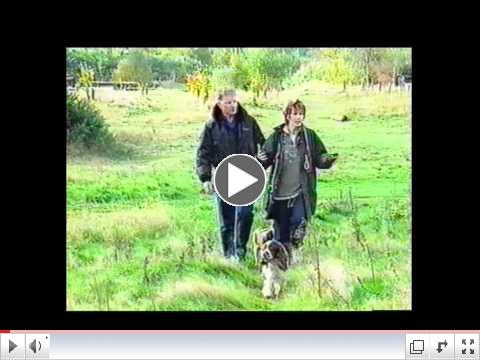When we think of a dog perceiving something or someone as being a danger to either them or their family, we tend to think of the dog barking loudly and becoming hyper active. Most people have seen a dog that is running back and forth along the fence line (boundary running) letting the cause of its distress know in no uncertain terms that their present is less than welcome.
However, there are many other ways that a dogs can show fear, we see this in the ones we know as 'shutdown dogs', these are the ones that have chosen to adopt the attitude of keeping their heads down by staying very quiet and even hiding out of sight. Wild dogs in Africa always use this tact as their world includes a number of much larger predators, who would think nothing of killing any dog that crossed their path, these include all of the big cats, Hyenas and the extremely aggressive Buffalo.
With domestic dogs this avoidance tactic will usually be accompanied by the licking of its lips, panting and perhaps, shaking but to better understand our dogs it is helpful to see the "shutdown" behaviour and the hyper active response to perceived danger as being two sides of the same coin. They are both a reaction to exactly the same thing but manifested in a completely opposite response. There are also those dogs that display behaviours caused by the same problem but are very subtle and be completely missed or ignored by the owner.
I have been following the progress of a dog that was taken into a new home and given a second chance and he had a history of grumbling at people who tried to approach him. Of course, we all know that the simple answer is to stop people from doing this in the first place, as well as giving the dog a kind and non confrontational corrective message as a consequence of that action. As is usually the case, the dog in question has a number of issues, from jumping up at people to refusing to go out into the garden. Fortunately for this dog he is now living with a family that knows and happily chooses' Amichien® bonding as their method of working with their dog and as always (when AB is done correctly), the beautiful dog is overcoming all of his difficulties.
It is his reaction to perceived danger that has proved both interesting and a source of more information for us as Dog Listeners, the reason being that when someone goes past his garden he lowers his body and makes a grumbling noise. He is immediately 'thanked' for alerting the family that there is a possible threat and if he continues the vocalising, then a family member will go through the 'thank, look isolate' sequence that is the basis of the kind and effective approach that we adopt.
Looking back on his progress it is remarkable, because we know that he had, for many years, repeatedly jumped up at the window sill, clawing at the wooden shelf, whining and even urinating at the slightest passing threat. A windy day proved a nightmare, as even a flying plastic bag sent him into the routine.
There are simple signals of stress from any dog owner to recognise, from hysteria to the subtle avoidance of eye contact, licking of lips, yawning (often seen as only a sign of a dog being tired or relaxed and, although it can mean this, we must always look at the situation that surrounds the dog before coming to any correct decision).
Dogs are superb at finding coping habits, especially when they are faced with things that are new or stressful to them. So look for the subtlety and then you will be in a much better position to really help your dog.
34 seconds into the accompanying film clip, from one of my television series, you will see how one of the young dogs with us spots the cameraman. He freezes for a moment and then returns to me and the other dogs to see our reaction to the strange thing and you will see just how quickly he is reassured by our lack of concern. Once you have become the leader, of their choosing, they will be able to take life in their stride.
 |
| Reef spots the cameraman!.wmv |
Jan Fennell
24th May 2012